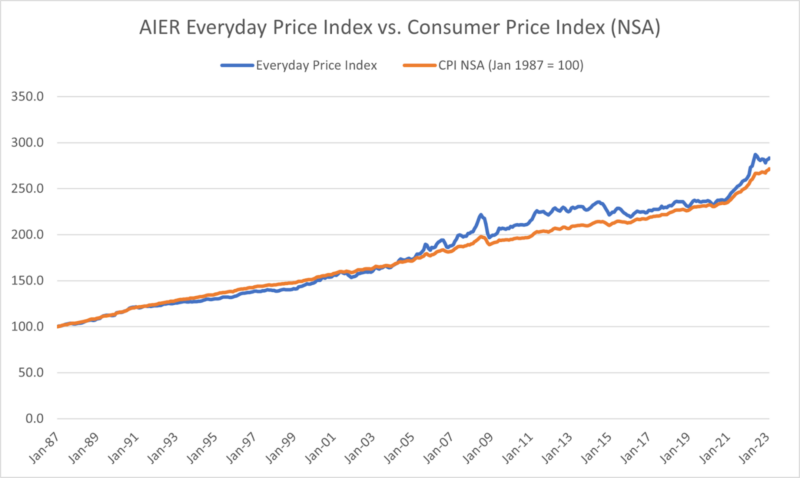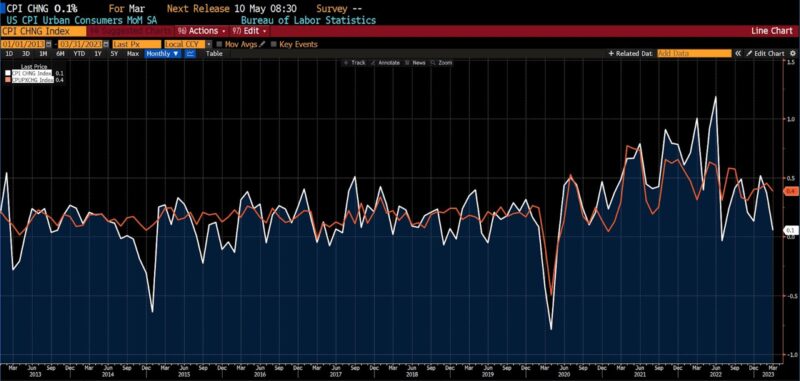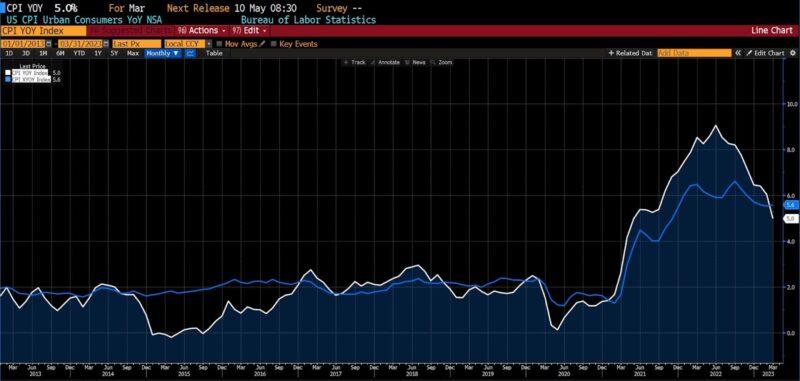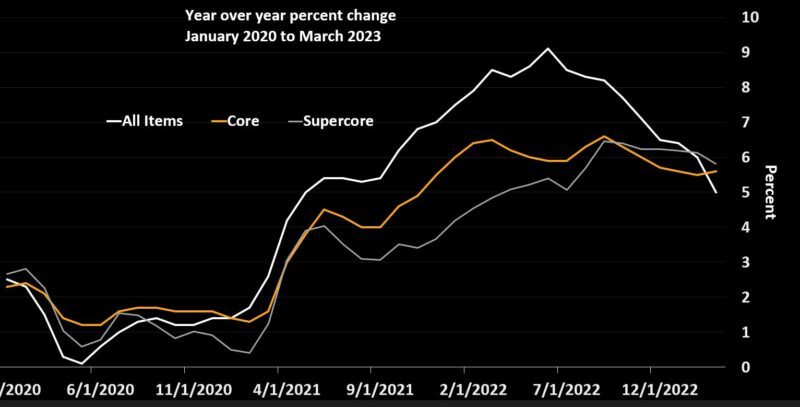AIER’s Everyday Price Index (EPI) rose 0.03 percent in March 2023, following increases of 0.93 percent in January and 0.67 percent in February. On a year-over-year basis the EPI is up 3.5 percent from one year ago with a March 2023 value of 282.7. While price changes in the constituent subindices largely canceled one another out, within the EPI between February and March the largest price changes were seen in food-away-from-home, motor fuel, and cable/satellite TV and radio service. The largest price declines occurred in household fuels and utilities, foot-at-home, and telephone services.

The US Bureau of Labor Statistics released the US Consumer Price Index (CPI) for March 2023 at 8:30 am EDT this morning. The month-over-month headline CPI rose 0.1 percent, which beat expectations of an 0.2 percent increase. Core CPI met expectations of an 0.4 percent increase month-over-month. Among the categories that saw appreciable increases between February and March 2023 were car insurance, airfare, household furnishings, and new vehicles. Notable declines occurred in used cars and trucks and medical care.
March 2023 US CPI headline & core, month-over-month (2013 – present)

On a year-over-year basis, headline CPI registered a 5.6 percent increase, meeting expectations. Core CPI on a year-over-year basis beat expectations by one-tenth of a percent, with a 5 percent change from March 2022 to March 2023. This month marks the first since early 2021 where core CPI was higher than headline CPI.
March 2023 US CPI headline & core, year-over-year (2013 – present)

An under-the-hood look shows that inflation remains sticky at recent levels. In March 2023 core goods prices increased 0.2 percent versus an 0.0 percent increase in February. Core services, meanwhile, rose 0.4 percent in March, registering a 7.1 percent increase since March 2022. A large portion of that increase came from shelter prices, which rose 0.6 percent from February to March and are up 8.2 percent since March 2022. Core services ex-housing rose 5.8 percent year-over-year, suggesting upward pressure on prices in labor-intensive industries.

Disinflation is continuing, but slowly, with the core and supercore measures (CPI excluding food, energy, and housing) now higher than the headline reading. The recent OPEC production cut may also put upward pressure on the headline CPI. The Federal Reserve has signaled that another 25 basis point rate increase is likely at its May 2023 meeting, which will bring the Fed Funds target to between 5.00 and 5.25 percent. Yet despite comments from Fed officials that rates would be held at those levels throughout the remainder of 2023, both Fed swaps and market implied policy rates forecast that by the start of 2024, the Fed Funds rate will be below 4.00 percent. In light of persistent inflation, recent concerns regarding financial stability, and growing signs of an economic slowdown in the second half of 2023, the future path of monetary policy is increasingly uncertain.
EPI_FINAL_TABLES_2023_03_FINAL_2Download
THIS ARTICLE ORIGINALLY POSTED HERE.




